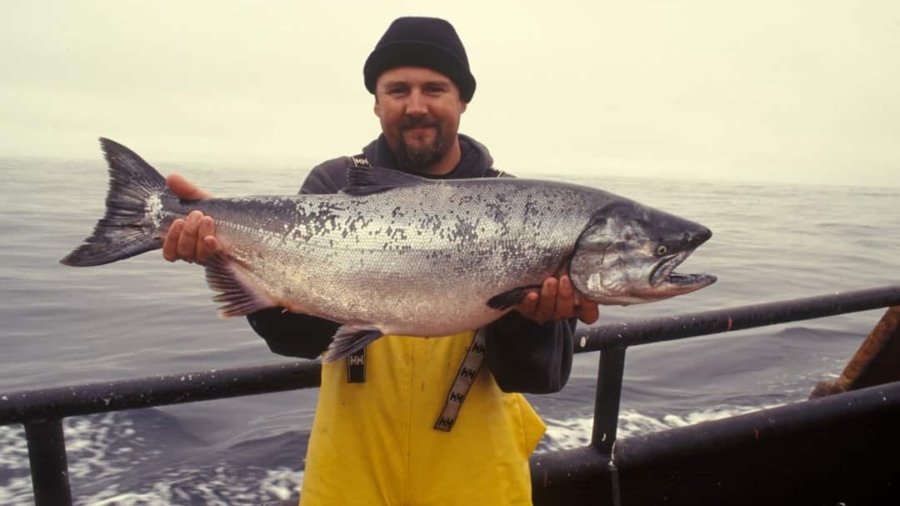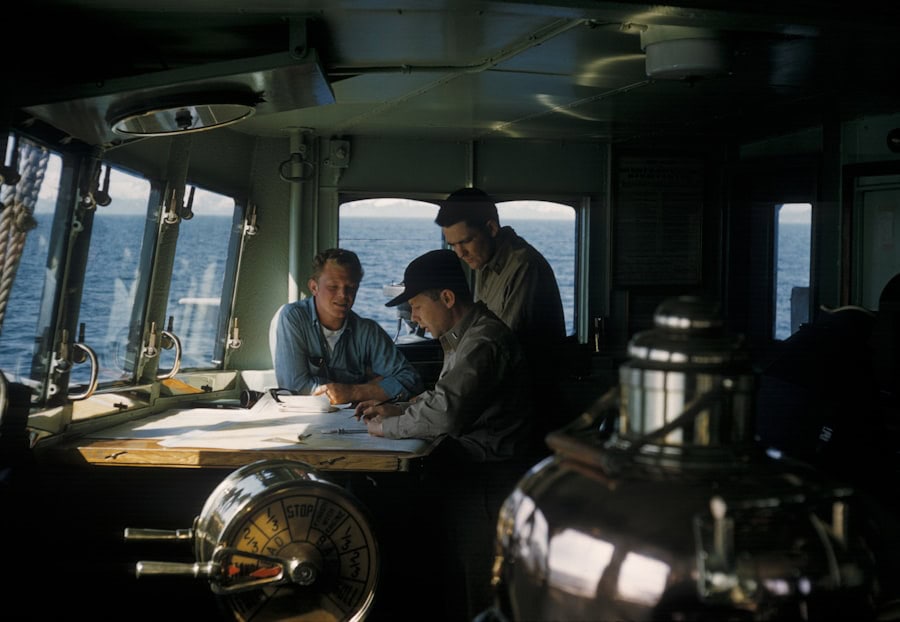Offshore drilling has emerged as a critical component of the global energy landscape, enabling the extraction of oil and natural gas from beneath the ocean floor. This complex process involves the use of specialized equipment and technology to reach reserves that are often located in deep waters, sometimes several miles from shore. The significance of offshore drilling cannot be overstated, as it accounts for a substantial portion of the world’s energy supply.
According to the U.S. Energy Information Administration, offshore production contributed approximately 15% of total U.S. crude oil production in recent years, highlighting its importance in meeting energy demands.
The offshore drilling industry has evolved significantly over the decades, driven by technological advancements and the increasing need for energy resources. The exploration and extraction processes are fraught with challenges, including harsh environmental conditions, deep-sea pressures, and the need for safety measures to protect both workers and marine ecosystems. As a result, the industry has turned to innovative solutions to enhance efficiency and safety.
Among these solutions, advanced robotics has emerged as a transformative force, reshaping how offshore drilling operations are conducted and paving the way for more sustainable practices.
Key Takeaways
- Offshore drilling involves extracting oil and gas from beneath the ocean floor, and it presents unique challenges compared to onshore drilling.
- Advanced robotics play a crucial role in offshore drilling, enabling the use of autonomous underwater vehicles (AUVs) and remotely operated vehicles (ROVs) to perform complex tasks in harsh underwater environments.
- AUVs are unmanned vehicles that can operate independently and collect data, while ROVs are controlled by human operators and are equipped with tools for performing tasks such as well maintenance and inspection.
- The use of advanced robotics in offshore drilling offers advantages such as increased safety, cost-effectiveness, and the ability to access hard-to-reach areas for exploration and production.
- However, challenges and limitations exist, including the high initial investment, the need for skilled operators, and the potential for technical malfunctions in remote underwater locations.
The Role of Advanced Robotics in Offshore Drilling
Enhanced Precision and Safety
The integration of robotic systems into drilling platforms allows for real-time monitoring and control of various processes, reducing the need for human intervention in hazardous environments. For instance, robotic arms equipped with specialized tools can perform tasks such as pipe handling, maintenance, and inspection without exposing personnel to the dangers associated with deep-sea operations.
Streamlined Workflows and Data-Driven Decision Making
This not only minimizes risks but also streamlines workflows, allowing for faster project completion. Moreover, robotics technology has enabled the development of sophisticated data collection systems that provide valuable insights into drilling operations. Sensors and cameras mounted on robotic systems can capture high-resolution images and gather data on geological formations, enabling engineers to make informed decisions about drilling strategies.
Optimized Drilling Techniques and Efficient Extraction
This data-driven approach enhances the accuracy of resource assessments and optimizes drilling techniques, ultimately leading to more efficient extraction processes. As a result, advanced robotics is not merely an auxiliary tool; it is becoming an integral part of the offshore drilling ecosystem.
Autonomous Underwater Vehicles (AUVs) and Offshore Drilling
Autonomous Underwater Vehicles (AUVs) represent a significant advancement in offshore drilling technology, offering unparalleled capabilities for exploration and monitoring. These unmanned vehicles are designed to operate independently underwater, equipped with advanced sensors and imaging systems that allow them to survey vast areas of the ocean floor. AUVs can be deployed for various purposes, including seabed mapping, environmental monitoring, and infrastructure inspection.
Their ability to operate autonomously reduces the need for surface vessels and minimizes operational costs. One notable application of AUVs in offshore drilling is their role in pre-drilling surveys.
AUVs can conduct detailed surveys that provide critical information about sediment types, underwater topography, and potential geological risks. This data is invaluable for engineers and geologists as they plan drilling operations, ensuring that resources are extracted safely and efficiently.
Remotely Operated Vehicles (ROVs) in Offshore Drilling Operations
Remotely Operated Vehicles (ROVs) are another essential component of advanced robotics in offshore drilling. Unlike AUVs, which operate autonomously, ROVs are controlled by operators from a surface vessel or platform. These vehicles are equipped with cameras, manipulators, and various tools that enable them to perform a wide range of tasks at great depths.
ROVs are particularly useful for real-time inspections and interventions during drilling operations. One of the primary functions of ROVs is to conduct inspections of subsea infrastructure, such as pipelines and wellheads. The ability to visually assess these critical components ensures that any potential issues can be identified and addressed promptly.
For example, ROVs can detect leaks or structural damage that may compromise the integrity of a drilling operation. Additionally, ROVs can assist in maintenance tasks by performing repairs or replacing components without requiring divers to enter hazardous underwater environments.
Advantages of Using Advanced Robotics in Offshore Drilling
The incorporation of advanced robotics into offshore drilling operations offers numerous advantages that significantly enhance overall performance. One of the most notable benefits is improved safety for personnel working in high-risk environments. By utilizing robotic systems for tasks traditionally performed by humans, companies can reduce the likelihood of accidents and injuries associated with deep-sea operations.
This shift not only protects workers but also aligns with regulatory requirements aimed at ensuring safety in hazardous industries. Another advantage is increased operational efficiency. Robotics technology allows for greater precision in drilling activities, leading to reduced downtime and optimized resource extraction.
For instance, automated systems can monitor drilling parameters in real-time, adjusting operations as needed to maintain optimal performance levels. This level of automation minimizes human error and enhances productivity, ultimately resulting in cost savings for companies engaged in offshore drilling.
Challenges and Limitations of Advanced Robotics in Offshore Drilling
Despite the numerous advantages offered by advanced robotics in offshore drilling, several challenges and limitations persist that must be addressed for widespread adoption. One significant challenge is the high cost associated with developing and deploying robotic systems. The initial investment required for advanced robotics technology can be substantial, which may deter smaller companies from integrating these solutions into their operations.
Additionally, ongoing maintenance and upgrades can further strain budgets. Another limitation lies in the technological constraints of current robotic systems. While AUVs and ROVs have made significant strides in capabilities, they still face challenges related to communication and navigation in complex underwater environments.
Signal loss due to deep-sea conditions can hinder real-time control and data transmission, potentially compromising operational effectiveness. Furthermore, the harsh conditions encountered at great depths can lead to equipment malfunctions or failures, necessitating robust designs that can withstand extreme pressures and corrosive environments.
Future Developments in Advanced Robotics for Offshore Drilling
The future of advanced robotics in offshore drilling holds immense potential as technology continues to evolve at a rapid pace. One area poised for significant advancement is artificial intelligence (AI) integration into robotic systems. By incorporating AI algorithms into AUVs and ROVs, operators can enhance decision-making processes based on real-time data analysis.
This could lead to more autonomous operations where robots can adapt their actions based on changing conditions without direct human intervention. Additionally, advancements in materials science may yield more durable and resilient robotic systems capable of withstanding extreme underwater conditions.
Furthermore, as renewable energy sources gain traction within the energy sector, there may be opportunities for robotics technology to support offshore wind farm installations or other sustainable energy initiatives.
The Impact of Advanced Robotics on the Expansion of Offshore Drilling
The integration of advanced robotics into offshore drilling operations represents a transformative shift that enhances safety, efficiency, and sustainability within the industry. As companies continue to embrace these technologies, they are not only improving their operational capabilities but also addressing environmental concerns associated with traditional drilling practices. The ongoing development of AUVs, ROVs, and AI-driven systems will undoubtedly shape the future landscape of offshore drilling.
As the demand for energy resources continues to grow alongside global population increases and economic development, advanced robotics will play an essential role in meeting these challenges while minimizing environmental impacts. The synergy between human expertise and robotic capabilities will pave the way for safer and more efficient offshore drilling practices that align with contemporary sustainability goals. In this evolving landscape, advanced robotics stands as a cornerstone for innovation within the offshore drilling sector, driving progress toward a more sustainable energy future.
If you are interested in the latest advancements in technology, you may also want to check out this article on the best laptops for Blender in 2023. Just like how advanced robotics are revolutionizing offshore drilling, having the right tools and technology is crucial for professionals working in industries like animation and design. This article provides valuable insights into choosing the best laptops for running Blender software efficiently.
FAQs
What is offshore drilling?
Offshore drilling is the process of extracting oil and gas from beneath the seabed in ocean waters.
How does advanced robotics support offshore drilling?
Advanced robotics supports offshore drilling by enabling the automation of various tasks such as drilling, maintenance, and inspection, which increases efficiency and safety.
What are some examples of advanced robotics used in offshore drilling?
Examples of advanced robotics used in offshore drilling include remotely operated vehicles (ROVs), autonomous underwater vehicles (AUVs), and robotic drilling systems.
How do advanced robotics improve safety in offshore drilling operations?
Advanced robotics improve safety in offshore drilling operations by reducing the need for human workers to perform dangerous tasks in hazardous environments, such as underwater or in extreme weather conditions.
What are the benefits of using advanced robotics in offshore drilling?
The benefits of using advanced robotics in offshore drilling include increased efficiency, reduced operational costs, improved safety, and the ability to access and operate in deeper and more remote offshore locations.



